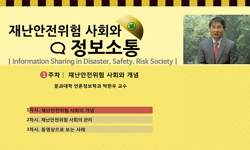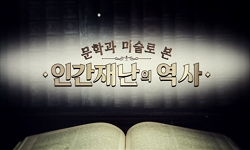본고는 중국 근대 국어 교과서에 나타난 재난관의 변천 과정을 고찰하는 데에 목적이 있다. 1900~30년대 국어 교과서의 재난관은 3단계로 나누어서 고찰할 수 있다. 이 시기에 천인감응의 재이...
http://chineseinput.net/에서 pinyin(병음)방식으로 중국어를 변환할 수 있습니다.
변환된 중국어를 복사하여 사용하시면 됩니다.
- 中文 을 입력하시려면 zhongwen을 입력하시고 space를누르시면됩니다.
- 北京 을 입력하시려면 beijing을 입력하시고 space를 누르시면 됩니다.

중국 근대 국어 교과서에 나타난 재난 인식과 대응 ―위생과 방역을 중심으로 = Disaster Awareness and Response in Modern Chinese Textbooks - Focusing on hygiene and quarantine
한글로보기https://www.riss.kr/link?id=A108271804
- 저자
- 발행기관
- 학술지명
- 권호사항
-
발행연도
2022
-
작성언어
-
- 주제어
-
KDC
700
-
등재정보
KCI등재
-
자료형태
학술저널
-
수록면
89-115(27쪽)
- DOI식별코드
- 제공처
-
0
상세조회 -
0
다운로드
부가정보
국문 초록 (Abstract)
본고는 중국 근대 국어 교과서에 나타난 재난관의 변천 과정을 고찰하는 데에 목적이 있다. 1900~30년대 국어 교과서의 재난관은 3단계로 나누어서 고찰할 수 있다. 이 시기에 천인감응의 재이관은 과학적 재난관으로 발전하였으며, 재난에 대한 대응책도 개인 방역에서 민간 공동 구제로 바뀌는 양상을 보였다. 1900년대의 《신정몽학과본》(1901)은 천인감응의 재이관을 비판하였다. 대중들의 무지에 대해 경계하고, 인재론 등을 대안으로 제시하였다. 1910년대에 진입하면서 여러 사상가, 지질학자, 진보 성향의 저널에서 모두 과학적 재난관을 주장하였으며 교재에도 영향을 미쳤다. 《신국문》(1912)에는 전염병의 발병 이유, 전파과정, 방역 방식 등을 자세하게 소개하는 글이 다수 등장한다. 그리고 방역도 개인 방역을 넘어 가족 방역과 가정 위생의 단계에까지 승격시킴으로써 전염병에 대한 진일보한 인식을 보여준다. 1920년대까지 국어 교과서는 재난에 대한 과학적 지식과 기술을 소개하는 데에 주력하였다. 이에 비해 1930년대의 국어 교과서는 전염병과 재난에 대한 체계적인 대응과 민간 중심의 공동 구제 방법을 강조하였다. 《개명국어과본》(1932)에서는 학교의 학생들이 주축이 되어 적극적인 구제 활동과 위생 운동을 전개하는 모습을 전면에 내세웠다.
다국어 초록 (Multilingual Abstract)
The purpose of this paper is to examine the process of changing the view of disaster in modern Chinese language textbooks. The view of disaster in Chinese language textbooks in the 1900s and 1930s can be considered in three stages. During this period,...
The purpose of this paper is to examine the process of changing the view of disaster in modern Chinese language textbooks. The view of disaster in Chinese language textbooks in the 1900s and 1930s can be considered in three stages. During this period, the relocation of ‘the theory of sensation between heaven and man’ developed into a scientific disaster view, and countermeasures against disasters also changed from personal quarantine to private common relief. In the 1900s, “Xindingmengxuekeben” (1901) criticized ‘the theory of sensation between heaven and man’. It was wary of the public's ignorance and suggested talent theory as an alternative. Entering the 1910s, several thinkers, geologists, and progressive journals all argued for a scientific view of disaster and influenced textbooks. In “Xinguowen” (1912), there are a number of articles that introduce in detail the reason for the outbreak of infectious diseases, the process of transmission, and the method of quarantine. In addition, quarantine also shows a further perception of infectious diseases by promoting it beyond personal quarantine to the stage of family quarantine and home hygiene. Until the 1920s, textbooks focused on introducing scientific knowledge and technology about disasters. On the other hand, textbooks in the 1930s emphasized systematic responses to infectious diseases and disasters and joint remedies centered on the private sector. “Kaimingguoyukeben”(1932) put forward the active relief activities and hygiene movements led by the students of the school.
동일학술지(권/호) 다른 논문
-
- 한국중국어문학회
- 박정원
- 2022
- KCI등재
-
21세기 한국의 중국 고전여성문학 연구의 성과와 과제, 그리고 전망
- 한국중국어문학회
- 최수경
- 2022
- KCI등재
-
- 한국중국어문학회
- 이다연
- 2022
- KCI등재
-
高麗時代 知訥의 《修心訣》에 반영된 중국어의 시대적 다층위성
- 한국중국어문학회
- 이재혁
- 2022
- KCI등재
분석정보
연관 공개강의(KOCW)
-

재난커뮤니케이션 (Disaster Communication)
K-MOOC 국가민방위재난안전교육원 이충현 -

한국의 재난관리체계 (Disaster Management System in Korea)
K-MOOC 국가민방위재난안전교육원 차정회, 국가민방위재난안전교육원 국제협력팀 -

재난관리 리더십과 재난대응 협업 (Disaster Management Leadership and Collaboration for Disaster Response)
K-MOOC 국가민방위재난안전교육원 NDTI International Cooperation Team -

재난안전 위험사회와 정보소통
영남대학교 박한우 -

문학과 미술로 본 인간재난의 역사
충북권역센터 김성연




 KCI
KCI KISS
KISS

